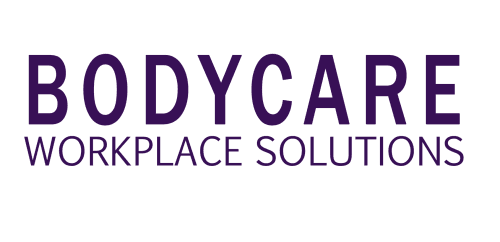Takeaways from the 2023 OHS Leaders Summit
By Rodney Hampel
Several Bodycare Workplace Solutions and Healthworks team members recently attended the 11th OHS Leaders Summit. Held at the Royal Pines Resort on the Gold Coast from 1-2 March 2023, the summit brought together more than 170 Directors of Health, Safety and Wellbeing from across Australia. This was a unique opportunity to explore ways to create a positive culture of health and wellbeing for those they lead.
Over the two days, expert speakers explored six major areas of importance relating to health and safety in the workplace: leadership, developments in safety principles, governance, pandemic risk management, mental health, and wellbeing.
We have pulled together the top themes which emerged throughout the presentations and look forward to exploring how we can incorporate this into our offerings.
Psychologically safe workplaces vs Understanding psychological risks
With the release of the new Model Code of Practice: Managing psychosocial hazards at work in July 2022, psychological safety and psychosocial risks are currently at the top of most safety agendas. While psychological safety and psychosocial risks both relate to the workplace, they differ in meaning and the factors that contribute to it and their impact on employees. During our time at the Summit, we observed that the terms “psychological safety” and “psychosocial risks” were used interchangeably. It is therefore important to us to make a clear distinction between these terms.
Psychological safety in the workplace refers to a work environment in which employees feel safe to express themselves and take risks without fear of negative consequences like humiliation, punishment, or discrimination. Psychological safety is a positive attribute, as it fosters an environment in which employees feel valued, respected, and able to speak up.
Psychosocial risks refer to work-related factors that may have negative effects on an employee’s mental health and wellbeing and may present as stress, anxiety, depression, or other mental health issues. The factors include job demands like excessive workloads, time pressure, low job control, role ambiguity or conflict as well as issues impacting work-life balance like long work hours, job insecurity, and inadequate support for work-life balance.
Both psychological safety and psychosocial risks are very important aspects of workplace health and wellbeing and require active attention from employers to ensure a safe and healthy workplace.
To prevent and manage psychological safety and psychosocial risks in the workplace, employers should:
- Identify the risks
- Develop policies and procedures to address the risks
- Promote an open, just and supportive workplace culture
- Provide training to all employees, especially leaders especially
- Ensure access to adequate resources for all employees
- Offer support (e.g., an employee assistance program, access to counsellors, mental health first aid training, etc.)
- Monitor and evaluate the impact of the risks on both the employees and the organisation.
Safety is best practised and delivered when we are face-to-face
Throughout the conference there was a lot of discussion around safety engagement within the workplace. While there are many avenues available to foster positive engagements, our takeaway is that safety conversations and interactions are still best facilitated in a face-to-face capacity. Despite the availability of technology to support and workplace safety, it’s all about the people. In our experience we find that the best results are achieve when we stop and have real conversations with real people
Less talk and more action
As professionals in the areas of occupational health and safety, we find ourselves constantly having the same conversation about how to instil a culture of health, safety, and wellbeing in the workplace. There are many great ideas, but we often miss translating these ideas into tangible actions with measurable and impactful results.
Bridging the gap between ideas and application and knowing what should be happening and how to make that happen, is essential in organisations facing increasingly diverse teams in a rapidly changing work environment that requires us to ensure the safety and wellbeing of workers.
While these conversations often finish with “That’s a great idea”, the next step of identifying the safety needs of an organisation, implementing or developing the skills required, and aligning these with an organisation’s policies, procedures and other structures reduce or eliminate workplace injuries, often gets missed. It is critical to spend less time talking about solutions and more time taking actions that protect our workforce.
The Bodycare onsite physio team follows a practice model whereby 60% of their onsite time is spent working at the coal face with workers on best practices, training, injury prevention and risk assessments. It is important for our team to not help manage injuries through treatment but work with organisations to ensure the most appropriate measures are in place to reduce or prevent workplace injuries.
Artificial intelligence and its powerful opportunities
Workplace safety is and should be a primary concern in Australian organisations. However, traditional methods can make it challenging to report injuries or hazards in the workplace. Not to mention, methods can involve a lot of paperwork that is a deterrent for workers to report injuries or hazards. Artificial intelligence and other available technologies can help create a safer workplace, boost efficiencies, and reduce downtimes by a significant margin.
Modern data analytics and artificial intelligence-based technology could reduce workplace injuries, as well as improve traditional processes in health and safety by streamlining and improving and automating processes.
There are opportunities to explore integrating voice recognition technology, powered by natural language processing, in existing software/technology. This can be used to help workers report accidents and injuries while at work. Workers can simply access an app or call a number to report an accident or injury. The voice recognition software will provide prompts to the worker to ensure the details of the accident or injury are recorded in full and in real-time.
This type of technology can speed up the reporting process and make it easier for workers who may not be able to write it down immediately or recollect the details of the accident or injury. It can also help ensure that accidents and injuries are properly documented, and the correct information is collected. An example of such AI technology, Contact Harald is a voice-powered intelligent assistant that uses artificial intelligence technology to understand requests, no matter how it is phrased. Harry is also connected to many different data sources, including your business systems.
AI can be an invaluable tool in the quest for a safer workplace but is not a cure-all solution. It should be used in conjunction with traditional safety methods, such as employee training and hazard identification.
Understanding your risks and responsibilities
Directors have a legal duty to implement and monitor systems to ensure safe working conditions in their workplaces as far as is reasonably practical. Specific questions to consider ensuring organisations are satisfying their work health and safety obligations include:
- What steps are being taken to ensure workers are regularly updated about risks and ways to minimise risks?
- What steps are being taken to ensure the health and safety of those workers who work remotely?
- How is the organisation ensuring the health and safety of workers who are working from home?
- What steps are being taken to minimise physical and psychosocial risks?
- What steps are being taken to ensure workers feel supported and how is the organisation proactively supporting those workers who may be more at risk?
To ensure organisation satisfy their due diligence obligations, it is important to set up a comprehensive compliance and risk management regime to monitor how management is ensuring compliance with relevant advice and eliminating/reducing workplace risks.
The summit provided invaluable insights into the health, safety and wellbeing challenges we are currently facing and a wealth of expertise on how to navigate an agile occupational health and safety landscape. Not only were our interactions with industry experts and potential clients worth the time, but it has also allowed our team to consider how we can further support our clients and expand our service offerings.



